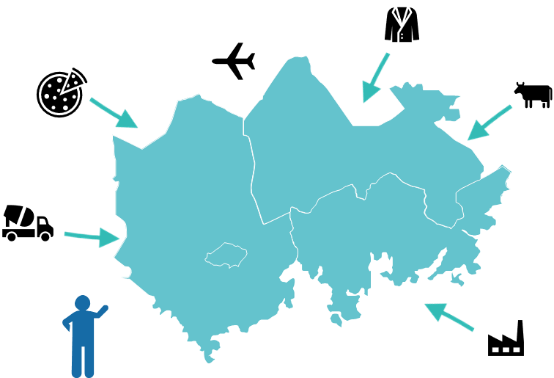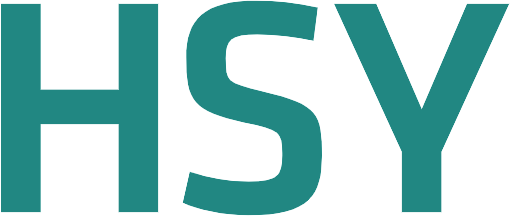Sustainable urban living programme
Information
Helsinki Region Environmental Services Authority
4.2.2022
Sustainable urban living programme
Helsinki Region Environmental Services Authority HSY
P.O.BOX 100
00066 HSY
tel. +358 9 1561 2110
www.hsy.fi
More sustainable consumption by increasing information and improving services
Vision: The residents of the Helsinki metropolitan area are enlightened, motivated and aware of the environmental impact of consumption and want to promote sustainability through their own actions. With their procurement of products and services, HSY and the cities act as leaders in the circular economy, sustainability and responsibility in the region. The cities implement urban planning in a sustainable way and promote the adoption of circular economy solutions through planning and construction management.
Our current emissions targets focus on reducing greenhouse gas emissions from activities within urban areas – meaning largely the energy consumption of buildings, service provision and transport in the cities. In order to assess the progress of a sustainable lifestyle in the urban area, we need to monitor and evaluate the consumption taking place in the area and any changes in it. From the perspective of climate impacts, this means taking into account the indirect greenhouse gas emissions of products and services used in the Helsinki metropolitan area as part of the annual carbon footprint of consumption.
Consideration of indirect emissions highlights, for example, the climate impacts of construction in the area more clearly than at present. The carbon footprint of consumption also helps to monitor the progress of the circular economy as the climate impacts of product manufacturing, material recovery or disposal are more clearly visible. The review of the carbon footprint allows developers of more sustainable forms of consumption or new service providers to demonstrate the impact of their activities at the regional level and as we move towards more sustainable urban living. In addition to assessing and monitoring emissions from consumption, we must also look for ways to lower the emissions of our lifestyles and day-to-day lives. With consumption choices, we are also able to directly influence the amount of waste we generate and thus reduce the use of natural resources.
Sustainable urban living in 2030:
- The carbon footprint of consumption is monitored regionally.
- Consumers are more aware of the environmental impact of consumption.
- Sharing economy services are brought to the fore and actively used by the residents.
- Repairing and maintaining products extends their service life.
- Shift in consumption towards high-quality and sustainable procurement, from purchases to services, sharing economy and experiences.
- Circular economy criteria have been drawn up for procurement.
- Moderation in consumption is also reflected in reduced waste volumes.
Objective: Promoting the transition to sustainable consumption and the circular economy in the urban area by increasing information and improving services.

Looking into and sharing information on consumption behaviour and emissions from consumption
Measure 1. Establishing a method for assessing indirect emissions from consumption and the total carbon footprint of the cities and initiating their monitoring to support decision-making
Improving sustainable services and their selection in the region
Measure 2. Opening comfortable recycling malls in the Helsinki metropolitan area
Measure 3. Mapping the accessibility of services for sustainable day-to-day life and strengthening rail transport station areas as service hubs
Measure 4. Promoting the use of maintenance and repair services and supporting their activities
Measure 5. Expanding the sharing economy services provided by the cities
Influencing consumer choices
Measure 6. Providing information on the environmental impact of consumption choices
Measure 7. Providing information on the water footprint of consumption choices
Measure 8. Motivating consumers to make responsible choices when clothes shopping
Measure 9. Improving the image and availability of used products
Measure 10. Promoting the use of reusable household products
Accelerating sustainable public procurement
Measure 11. Increasing cooperation between the cities in sustainable procurement
Measure 12. Developing circular economy criteria for the cities’ procurement
Measure 13. Committing to the use of durable products instead of disposables in public procurement

